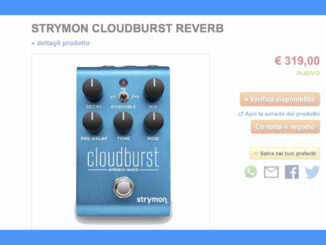At NAMM 2020, Red Panda showed the Context v2, a redesigned version of its reverb pedal with new algorithms, new interface & more.
Red Panda is one of the most exciting pedal developers on the market in my opinion because they give classic effects an experimental twist. There is now a nice update for the context reverb pedal. For Context v2, the developer decided to completely redesign the pedal, to give the interface more control options, but also more algorithms.
In version 2, they add three new modes: reverse reverb, spring reverb (inspired by 1980s) and a granular reverb inspired by the Ursa Major SST-282 Space Station. The Room, Hall, Cathedral, Gated, and Plate reverb algorithms are updated versions of the Context version 1 reverbs, but now delay is available in all modes. They also have separate low and high damping controls with more range, along with all the other new features.
New Interface & Connectivity
The Context v2 has a completely new interface that is slimmer and more compact compared to the previous one. However, more controls have been added, which may make it more complex to use. Many of the new functions can be accessed via the shift function. You can find here: blend (balance), pre (delay), decay (feedback), modulation (rate), Hi EQ (dynamic ducking/expander), Lo EQ (dynamics threshold) and modus (division).
Besides this, the developers add stereo input/output, USB MIDI, fully assignable expression pedal input, and a new infinite hold function. Plus, there are now two food switches instead of one. One for changing the preset including a save function and another for trails on/off. Unfortunately, no real MIDI In/Out or tap-tempo for the delay. Not so perfect for synthesizer players. But according to the developers, tap tempo is accessible using an external tap tempo box into the CTRL port or by using MIDI control via USB or 1/4″ TRS via the CTRL port.
Red Panda Context V2 will be available in March/April for a price of $299 USD.
More information here: Red Panda
Red Panda is available at our partner





Thanks for this! Our full manual is not out yet but I thought it’s worth mentioning Tap Tempo is accesible using an external tap tempo box into the CTRL port, or by using MIDI control via USB or 1/4″ TRS via the CTRL port.
thanks Andy for your feedback. Good to hear that Temp Tempo is possible 🙂